
Email marketing is a complicated field, and effective email campaigns require complex strategies that contribute to your marketing goals. That said, you can often achieve significantly better results by just making a few simple adjustments.
10 Professional Email Writing Tips for Marketers
This article will cover some of the best ways to upgrade your approach to email marketing and differentiate your brand from the competition. We’ll also go over a few email marketing best practices that every marketer should know along with examples of good emails.
Keep in mind that every campaign is different. What works for one brand may not be a good idea for another.
1. Creating a Welcome Sequence
Welcome emails don’t always lead to a conversion, but they’re still an integral part of the sales funnel. A strong welcome sequence is a good starting point for the customer journey and helps you create a positive first impression. Most customers expect a welcome email after signing up for a new email newsletter.
Data shows that welcome sequences can have a significant effect on both sales and long-term customer engagement. Companies that send three welcome emails earn five times more revenue and see three times higher open and click rates than those that don’t.
Welcome emails are the perfect opportunity to give readers more information about your brand and keep them interested in your products. You can also include links to your social media profiles in order to increase engagement on multiple channels.
2. Implementing Email Marketing Automation
While it’s technically possible to manage an email campaign on your own manually, email marketing automation services give you access to a wide range of tools that help optimize your content and achieve better results while spending less time on each campaign. Digital marketing automation is one of the simplest ways to immediately upgrade your email marketing practices.
You can access automation features using a variety of email marketing applications. Different applications let you configure automation workflows with different triggers, allowing you to customize every aspect of the customer journey. A personalized automation campaign sends relevant content at the right time based on customizable parameters.
Cart abandonment workflows, for example, target users who add an item to their cart on your site but don’t follow through with the purchase. You can set an email to send one hour after they leave your site in order to remind them of the item and give them a second chance to consider the purchase.
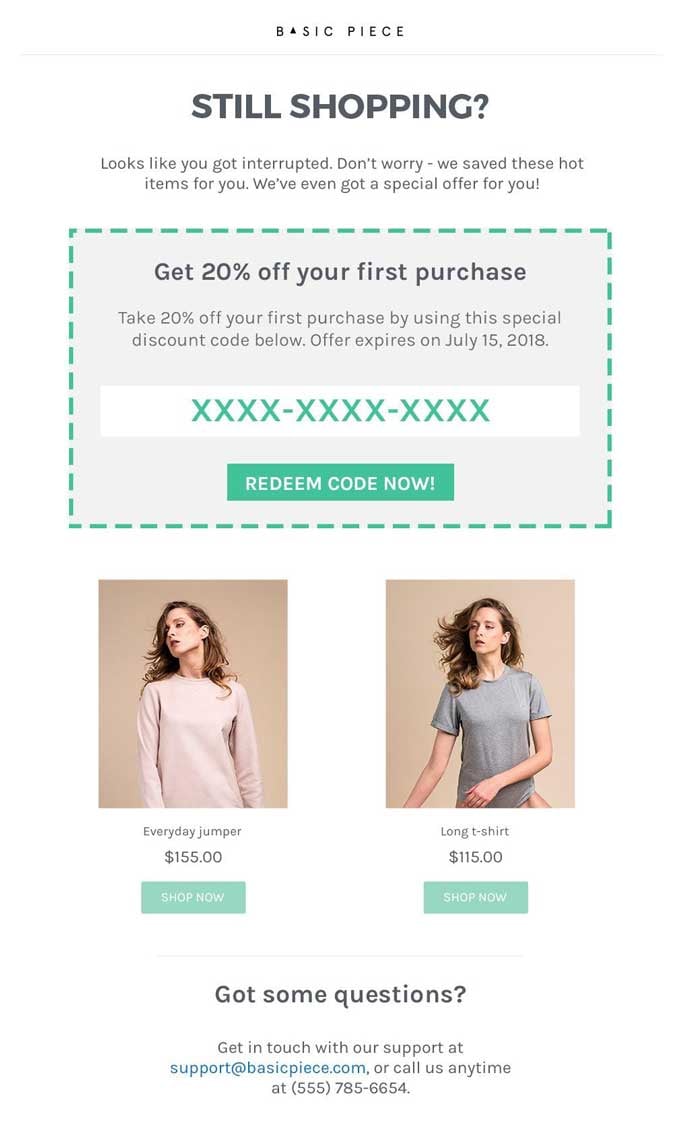 Example of shopping cart abandonment email
Example of shopping cart abandonment email
If the first email doesn’t lead to a sale, consider adding a second message the next day that includes an exclusive discount and other products they might be interested in. Most online shopping carts are abandoned before the purchase, so converting even a small percentage of abandoned carts will have a significant effect on sales.
3. Taking Advantage of Interactive Sign-up Forms
Sign-up forms probably aren’t your top marketing priority, but certain types of sign-up content consistently perform much better than others. Implementing new options could improve your email capture results and help you convert new leads into returning customers.
The standard sign-up form, for example, leads to fewer registrations than any other option. Pop-ups and landing pages are substantially more effective and draw your audience’s attention immediately. Finally, interactive registration forms achieve the best performance of any sign-up content.
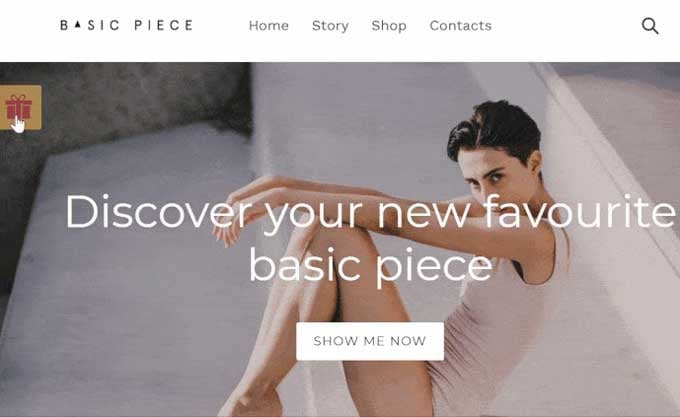 Example of interactive email sign-up form
Example of interactive email sign-up form
4. Adding Exit-intent Popups
While dynamic sign-up content of any kind is a step up from static forms, exit-intent popups give you the unique opportunity to target readers right before they leave your site. They’re the most effective way to extend customer interactions and give users another chance to view products.
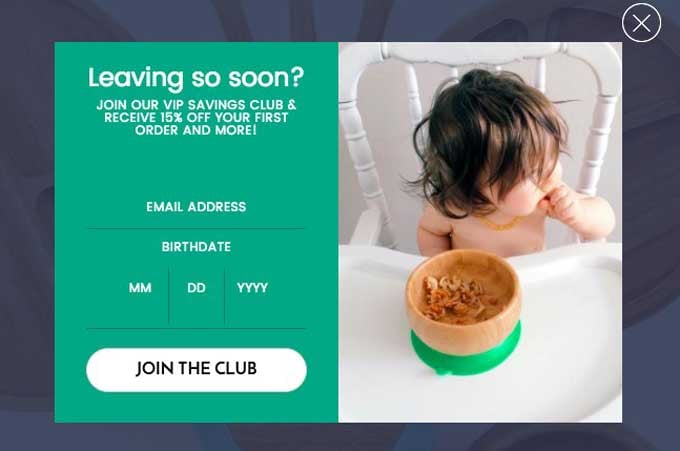 Example of exit-intent popup to capture email addresses
Example of exit-intent popup to capture email addresses
Exit-intent popups monitor each user’s cursor and appear when it leaves your window. Most brands offer discounts or other benefits in exit-intent popups to give readers an incentive to keep browsing. They’re much less intrusive than popups that display at the beginning of an interaction, and they’re easy to set up in most marketing automation applications.
5. Writing Concise Emails
It’s difficult to know when to stop adding to an email, but it’s usually best to remove anything that isn’t directly relevant to the message’s value. Most users only spend a few seconds reading each email. They’ll probably move to the next message if you don’t get their attention immediately.
Marketers also hurt their conversion rates by adding too many call-to-action (CTA) buttons to their emails. You should generally try to limit each email to two CTAs in order to keep the design clear. The first one should be visible as soon as each reader opens the message. They shouldn’t have to scroll down to see what you want them to do.
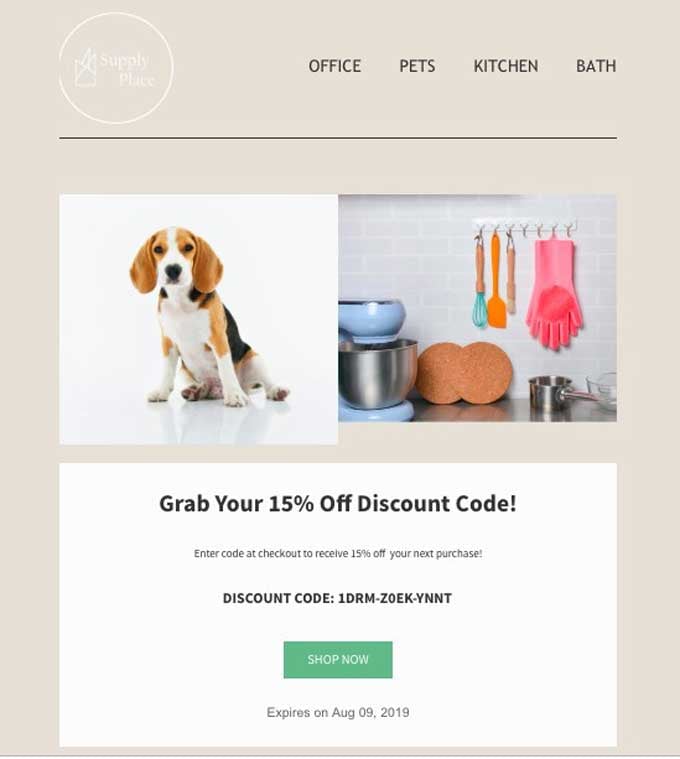 Example of prominent email call-to-action (CTA)
Example of prominent email call-to-action (CTA)
For the same reasons, it’s important to emphasize the value of your email in the subject line in order to get readers interested in the message. A growing number of users read emails on a smartphone, and most mobile apps also display the first few words of the body. These are the two most important elements in any marketing email.
6. Adjusting Email Frequency
Some marketers assume that a higher frequency will lead to more sales, but sending too many emails is one of the most common reasons people unsubscribe from newsletters. While every brand is different, it’s critical to tailor your email frequency to your audience’s desires.
Whatever frequency you decide on, make sure to stick to it over time rather than sending emails whenever it’s convenient. Your audience should know when to expect a message—a few high-quality emails per month are much more effective than ten emails that your audience never opens.
If you’re having trouble with email frequency, consider giving your audience the opportunity to select how often they want to hear from you. You can either let them choose a specific frequency or only opt into certain types of content. Users are much less likely to unsubscribe when they have control over the emails they receive.
7. Removing Inactive Contacts
Many people change their email address regularly, and some users will inevitably lose interest in your brand over time. With that in mind, it’s important to periodically go through your email list and remove contacts who are no longer engaged with your content.
Readers who haven’t opened an email in more than six months, for example, probably aren’t going to open the next one either. While you can send one or two re-engagement emails to inactive users, they should be removed from your email list if those don’t work.
Stale leads add nothing to your campaigns and make your marketing metrics less accurate by skewing results. Try to take the time to review your email list at least once per year in order to stay engaged with the most valuable leads.
8. Understanding Your Sender Name
Many marketers aren’t aware that they can change their own sender name, but this can actually have a major effect on your email marketing success. The wrong sender name will lead your messages to be sorted as spam by email filters, preventing them from reaching your audience.
The most important factor in a sender name is the match between the name, email address, and domain. Any discrepancy between these three elements will hurt your performance in email filters. Use A/B testing to compare different sender names and determine which ones lead to the best results.
9. Split-testing
Split-testing, or A/B testing, is one of the most reliable ways to improve your email marketing practices, and it will almost always help you achieve better results over time. A/B testing involves comparing the performance of two different ads or elements to determine which one is more effective.
Rather than using a single idea, split-testing allows you to try out two different possibilities before committing to one for the rest of the campaign. You can split-test anything from subject lines and images to CTAs and sender names. You should A/B test at least one element in every email you send.
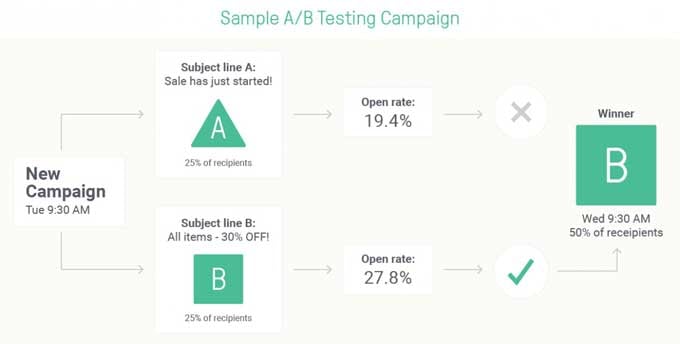 Choosing an email split-test winner
Choosing an email split-test winner
10. Setting Measurable Goals
Failing to set goals is one of the most common email marketing mistakes, and it prevents you from finding the strengths and weaknesses in your strategies. Without a measurable goal, you won’t be able to interpret the results of a split-test or identify points of friction in the customer journey.
Welcome emails, for example, are simply designed to promote customer engagement. Open rate or click-through rate are more relevant than other metrics, so these should be your criteria for an A/B test. With promotional emails, on the other hand, you should probably be looking at conversions rather than clicks.
Better performance in one area doesn’t always lead to more success in another, so it’s critical to set a goal for each email before using it. This strategy also allows you to measure progress over time and make sure that you’re moving in the right direction.
The best marketers are always looking for ways to improve their tactics, and these tips will help you optimize each campaign for more opens, clicks, and sales. Keep in mind that email is most effective when combined with other channels, including paid ads and social media.
 Karolina Petraškienė is a digital communicator, content marketer, and email enthusiast at Omnisend. When she's not writing awesome articles, you can find her in the woods challenging herself in hiking boots or off-roading her bike.
Karolina Petraškienė is a digital communicator, content marketer, and email enthusiast at Omnisend. When she's not writing awesome articles, you can find her in the woods challenging herself in hiking boots or off-roading her bike.










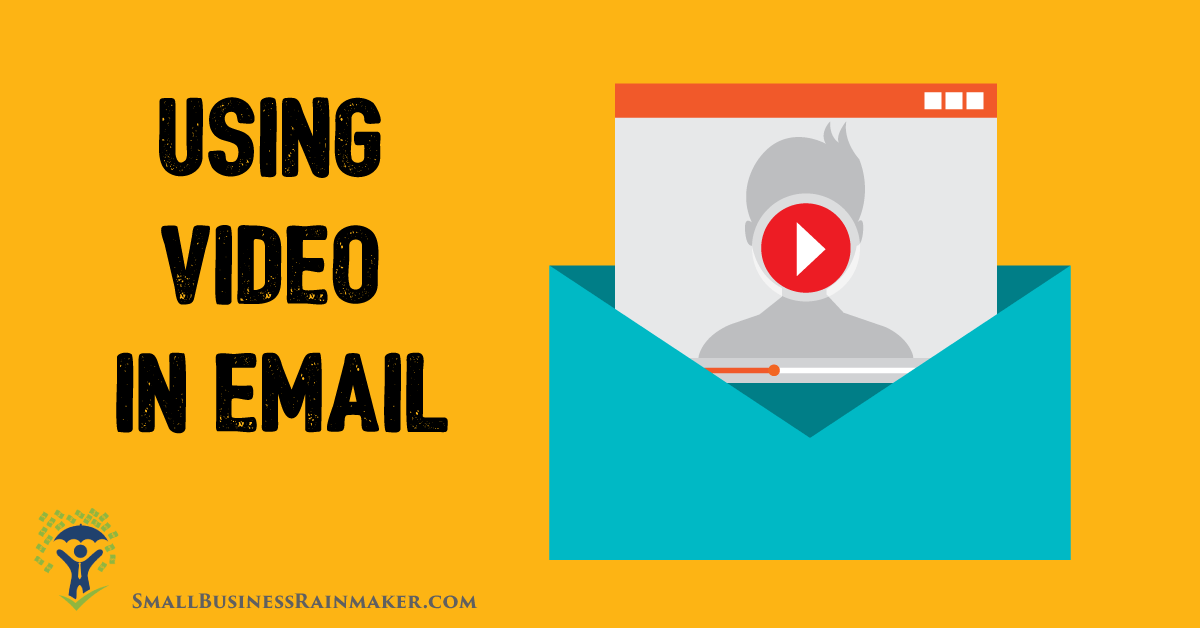
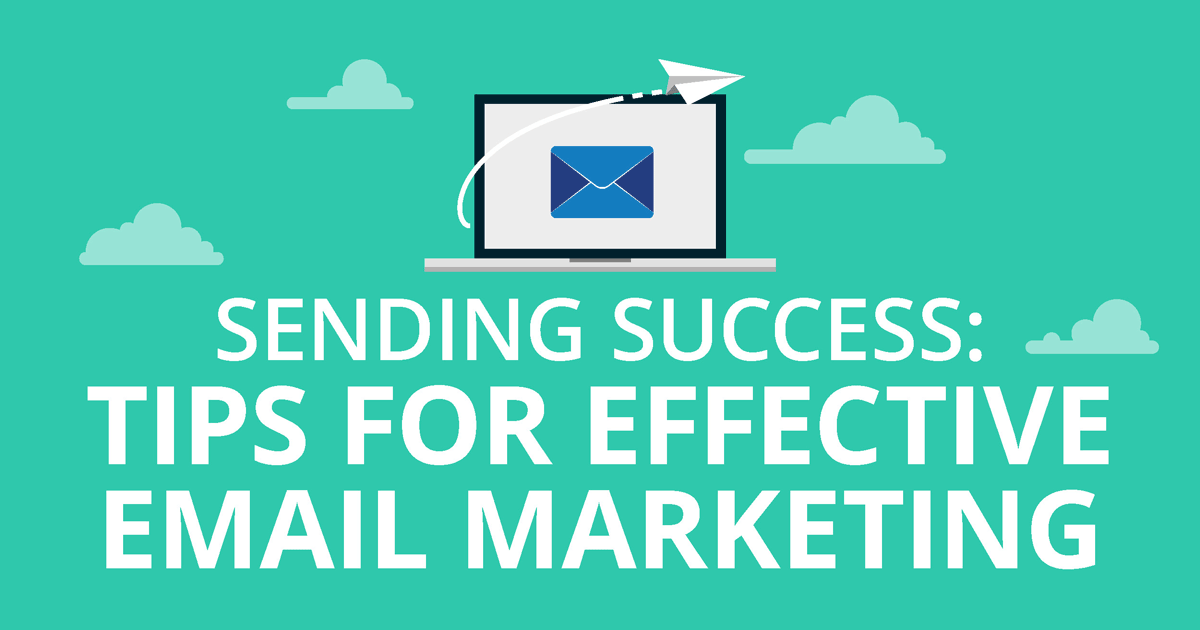


Leave a comment